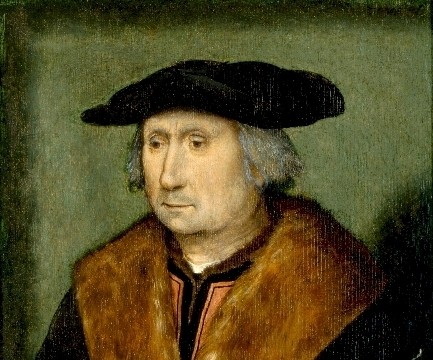Gerardus van Papenbroeck (1673-1743) was an Amsterdam merchant, but collecting was his preferred activity. He built up a collection of manuscripts that included ‘personal letters from Emperors, Kings, Princes, and the most prominent Scholars of the past two centuries’ as well as manuscripts for books, including those of P.C. Hooft. In addition, he collected around 140 sculptures from antiquity, the so-called Marmora Papenburgica, which formed the basis for today’s National Museum of Antiquities.
Van Papenbroeck also possessed a large collection of portraits of ‘Erudite and Renowned Men’: almost 80 portraits of statesmen and over 80 portraits of scholars (mainly theologians) and writers. Some of the portraits hung in his house at 336 Herengracht in Amsterdam, and some at the Papenburg country estate in Velsen, which has since been demolished. He divided the portraits among different institutions, including Amsterdam’s Athenaeum Illustre. This was quite remarkable, given that this institution was then still very small. The appointment of Petrus Burmannus Secundus as professor in 1742, ushering in a new heyday for the Athenaeum, will undoubtedly have influenced the decision to donate. The Athenaeum also received an enormous painting, De ruïnes van Palmyra [The ruins of Palmyra]. This was the odd one out in the donation, more closely related to Van Papenbroeck’s antiquarian collection.
The paintings were hung in the Great Lecture Hall of the Athenaeum Illustre, on the first floor of the former Agnietenkapel on Oudezijds Voorburgwal, where they once again hang today. The collection includes portraits of the Athenaeum’s first professors, Gerardus Johannes [UvA1]Vossius and Caspar Barlaeus. In addition, there are paintings of such well-known figures as Erasmus, Lorenzo de Medici, Calvin, Barclaius and Ariosto, the latter probably based directly on a drawing by Titian. Among the portraits were those of two popes, both ‘fierce inquisitors’, which were removed in 1921 at the request of the Theology faculty of the University of Amsterdam, on the grounds that ‘neither they nor we benefit from each other’s company’.
Highlights of the Van Papenbroeck Collection include the portraits of Johannes Antonides van der Goes and Petrus Francius, both painted by the seascape painter Ludolf Bakhuysen; a three-quarter-length portrait of Pieter Cornelisz Hooft, painted by Michiel van Mierevelt; and a portrait of Vondel, painted in 1660 by Jan Lievens.
